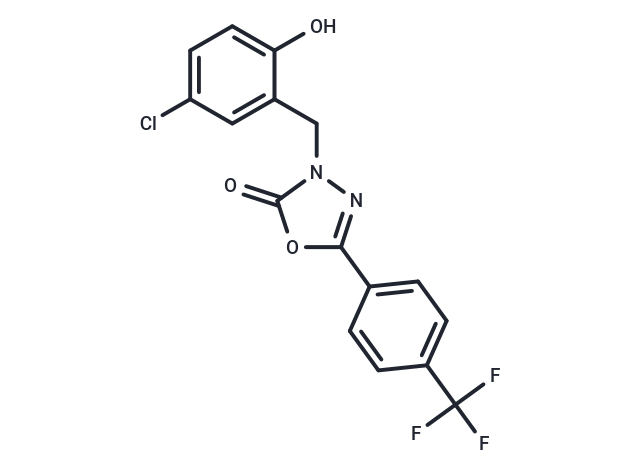Shopping Cart
- Remove All
 Your shopping cart is currently empty
Your shopping cart is currently empty


| Pack Size | Price | Availability | Quantity |
|---|---|---|---|
| 2 mg | $34 | In Stock | |
| 5 mg | $51 | In Stock | |
| 10 mg | $79 | In Stock | |
| 25 mg | $163 | In Stock | |
| 50 mg | $308 | In Stock | |
| 100 mg | $463 | In Stock | |
| 1 mL x 10 mM (in DMSO) | $58 | In Stock |
| Description | BMS-191011 (BMS-A) is an activator of large-conductance calcium-activated potassium (BKCa) channels ,effective in stroke models |
| In vivo | In vivo, BMS 191011 (10-100 μg/kg, i.v.) increases the diameter of retinal arterioles without affecting blood pressure or heart rate in rats, an effect that is reversed by the BKCa channel blocker iberiotoxin[1] |
| Alias | BMS-A |
| Molecular Weight | 370.71 |
| Formula | C16H10ClF3N2O3 |
| Cas No. | 202821-81-6 |
| Storage | Powder: -20°C for 3 years | In solvent: -80°C for 1 year | Shipping with blue ice. | |||||||||||||||||||||||||||||||||||
| Solubility Information | DMSO: 125 mg/mL (337.19 mM) | |||||||||||||||||||||||||||||||||||
Solution Preparation Table | ||||||||||||||||||||||||||||||||||||
DMSO
| ||||||||||||||||||||||||||||||||||||

Copyright © 2015-2024 TargetMol Chemicals Inc. All Rights Reserved.